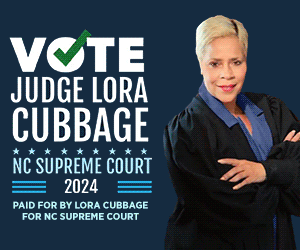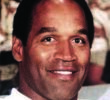The Dudley-A&T Revolt Revisited
Rev. Nelson N. Johnson / May 17, 2019The Struggle for Democracy and Beloved Community in Greensboro’s 1969 Segregated, Jim Crow School System
May 23 and 24, 2019 will mark 50 years since North Carolina A&T State University (A&T) was assaulted by 650 National Guard troops. The troops fired 50 caliber machine guns into Scott Hall and lobbed tear gas canisters through the broken windows in a 6 a.m. invasion. When the troops stormed inside Scott hall they shot through doors, turned over furniture, scattering personal belongings, wrecking rooms in the process.
That raid resulted in busloads of students being detained and bussed to the McLeansville prison some 10 miles outside of Greensboro in what was termed “protective custody.” A&T was closed for the year and A&T’s President Dr. Lewis C. Dowdy was summoned to Washington, D.C. to testify before the House Un-American Activities Committee (HUAC).
There is very little about this page of Greensboro’s history in the International Civil Right Museum, very little on A&T Campus, and very little in the Greensboro Historical Museum. Perhaps the only place to get a reasonable understanding of events of that period is the archives of the Carolina Peacemaker. We must ask the question, why? Why would such a major historical page of Greensboro’s history be essentially blank?
I recently read in the April (2019) edition of A&T Alumni Times some reflections from a few members of the Class of 1969 related the military invasion. I was saddened by some of the comments because there was no context, Context provides meaning. Presumably, all of the students’ statements were factually accurate; however, without context, there could be no real understanding. As an active organizer in 1969, I want to provide my account and perspective on that “missing page” of Greensboro’s history.
In 1969, Claude Barnes Jr., a Dudley High School student filed to run for Student Government Association (SGA) president at Dudley. The school system, however, refused to allow his name to be put on the ballot, clamming that he belonged to a militant organization, named Youth for the Unity of a Black Society (YUBS). Objectively, YUBS was the youth arm of the Greensboro Association of Poor People (GAPP).
It is important to note that in 1969 GAPP had emerged as a considerable, grassroots force in the community. Working with the NAACP, churches, Black business leaders, and other groups, GAPP had built a network of seven neighborhood-based grassroots organizations. This coalition also included young people at Dudley. The Black Community was growing increasingly aware of its history and its duty to challenge the scourges of racism, dehumanization and all forms of exploitation.
Dudley students largely rejected the school system’s logic about YUBS being subversive and chose to write-in Claude Barnes for SGA President anyway; he reportedly won by a two to one margin. The school system refused to accept the write-in ballots, supposedly because an option for write-in ballots was not in the school’s constitution. The all-White School Superintendent and Board of Education objectively guided the rejection process through their public relations director, Owen Lewis, who was also White. Lewis essentially replaced the Dudley’s Black principal, Mr. Franklin.
From the Dudley SGA Election Day on May 2, 1969 until May 22, 1969, nearly three weeks, Black community leaders, clergy and organizers made many efforts to solve the problem, holding meetings and pleading with the School Superintendent Dr. House, the Board of Education and Dudley officials. These efforts involved NAACP President Dr. George Simpkins; Rev. Cecil Bishop, Pastor of Trinity AME Zion Church; Mr. A.S. Webb, Secretary-Treasurer of American Federal Savings and Loan Association; Rev. Otis Hairston, Pastor of Shiloh Baptist Church; Nelson Johnson, then Vice-President-elect of the A&T SGA and Director of GAPP, as well as other residents and parents of Dudley students.
In spite of all the many efforts of a relatively united Black community, the all-White school board refused to budge. As a result of the stubbornness of White leadership, Dudley students started to picket. They were sprayed with tear gas and abused by police. Wet from rain and bruised from scuffles with police, Dudley students were jailed. When they were released, they came to A&T’s Student Union, where the national founding conference of the Student Organization for Black Unity (SOBU) was underway, the students asked for help.
The conference attendees and a large number of A&T students marched to Dudley High School entered the women’s gym and proclaimed young Claude W. Barnes Jr. the duly elected president of the Dudley SGA. It was all peaceful, no one was threatened and no school property was damaged or destroyed. A significant number of Dudley students did leave their classrooms and joined us in the gym. After an impromptu energetic installation ceremony, all the conference attendees and students returned to the A&T campus.
The story quickly spread across the city and beyond. Later that evening and into the night of May 22 tensions grew along East Market Street where Whites and Blacks engaged in verbal and sometimes physical exchanges with each other. As the night unfolded, police began to engage the students. A police vehicle drove onto A&T’s campus near where Haley Hall is now located and fired into a crowd of fleeing students and hit Willie Ernest Grimes, an A&T student and ROTC member, in the back of the head; he died. Although students saw the police, the police completely deny the charge. After Grimes’ death, a group of students who were veterans of the Vietnam Tet Offensive, some of whom were armed, made the decision to secure the campus. They refused to allow police and other unknown person onto the campus.
The next day I was contacted by Hal Seiber who was employed by the Greensboro Chamber of Commerce and urged to attend a meeting that he organized. I agreed to attend along with young Claude Barnes. After a lot of talk, the meeting ended with no positive results.
As I reflect on the last 50 years, I know that we in Greensboro and all over this nation need beloved community and real democracy. Our moral/ ethical standards are being eroded as many democratic institutions, already fragile, are being further undermined. Yet, I refuse to bow to a pessimistic spirit. We as a city should more fully engage our past, learn from it so as to build a better future. The story of the 1969 Dudley-A&T Revolt is one of the chapters of our collective past, if authentically and collectively explored, will help to offer us a pathway to a brighter, mutually affirming new era in Greensboro.
Rev. Nelson N. Johnson is the co-executive director of Beloved Community Center of Greensboro and was the A&T SGA Vice-President Elect in May 1969.
[nggallery id=152]







